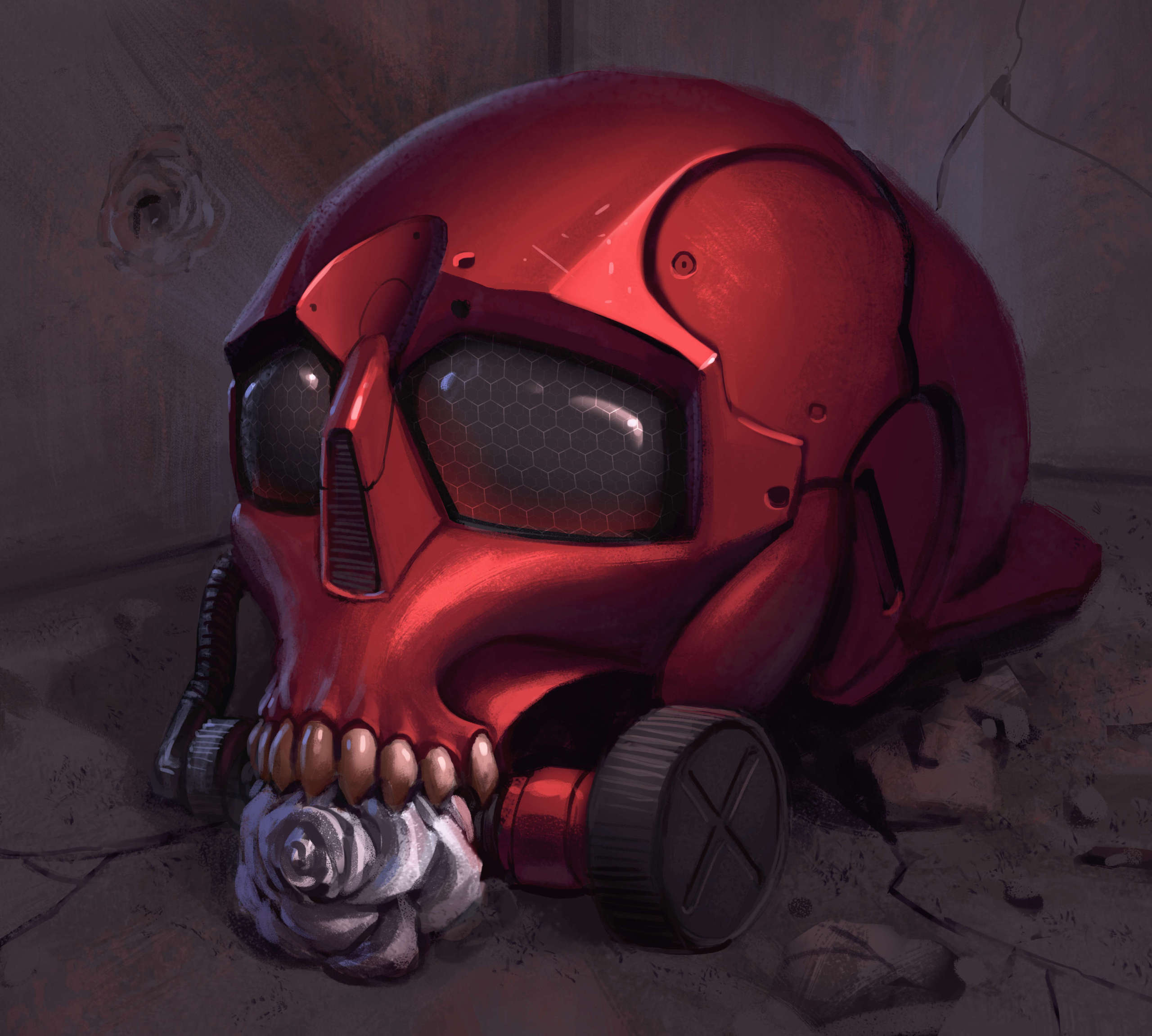The Soldier's Suit
Combat suit, the protective gear of every Northerner
Every soldier in Magnesa utilizes some form of protection for their person in spite of the rarity of combat. “Always be ready,” so they argue. In the North, they call this armor the combat suit. It is a standard and overtly useless piece of protective gear when preventing injury (or death) by modern firearms.
The combat suit consists of just two pieces. The principal piece is a linen tunic worn over the torso that splits near the waist and ends just above the knees. Trousers are typically worn underneath alongside a basic shirt. Leather bands fasten the tunic about the waist.
The second piece is the cuirass, worn over the tunic. This is made of rawhide leather but is purpose-built thin due to its purely ceremonial quality. The cuirass’s function isn’t to provide protection so much as it is to identify a soldier’s rank and affiliation. The soldier’s numerical designation mark (e.g., 999 for tackling), any relevant crescents and the scutum’s memento are all applied to the cuirass via patches sown thereon. Rather than be put on like a breastplate, it opens at the back and is tied in place with straps. No special treatment or modification to this leather piece is allowed. Moreover, all ranks, save the Comissar, wear this type of cuirass.
With the onset of fall, warmth is required. Therefore wool becomes paramount: wool gloves, wool pants akin to long johns, and wool boots are supplied. A cap is also worn. When in especially frigid temperatures, coats and cloaks (the cloche) are put on. Others may don mantles. More prestigious ranks or fortunate individuals are permitted to wear precious animal furs like beaver instead of or in addition to wool.
As mentioned previously, only the Comissar is excluded from wearing the common soldier’s cuirass. Instead, the imperator wears what is often called the buffover: a cuirass still made from leather, but reinforced and worked with enough finesse that it could provide protection against a scourge’s lash or a blade’s slash. Ultimately, this piece too is ceremonial. Because it is buffed lends the armor its nickname.
Unlike a soldier’s cuirass, a Comissar’s own does not open at the back. Instead, it is a solid piece, pulled over the head and thus custom-made to the dimensions of the Comissar’s trunk. In addition, the buffover can be embellished with any number of adornments and designs. This gives license for more “aesthetically-challenged” Kings to decorate their leather canvas with any number of confused and visually random things.
As for who is responsible for making the combat suit and performing the appropriate tailoring, that falls on the scutum’s leatherman/woman. A handful of soldiers are selected, either willingly or not, to train for this post, rather than the whole soldier base due to the commitment required. Any soft repairs, however, are left to the soldier to correct.
Naturally, combat suits eventually wear down beyond repair. About every two years the soldier’s cuirass is replaced; the buffover whenever the Comissar so desires.
It is tradition in Red Battalion for each soldier to retire their cuirass by hanging it on an object (such as a branch), and before firing an arrow at it, asking a wish to Fortune. Should it hit and stick, the wish will be granted. A miss and the wish will be ignored. But a slip (i.e., the arrow hits but does not stick) is a sign of bad tidings. Still, this tradition is not generally taken seriously.
Weight
Less than 10 lbs.
Dimensions
Varies on the individual.
Raw materials & Components
For the cuirass: rawhide, tannin, oil, wax and pig lace (for the straps). For the tunic: linen.
Tools
Knives, straight edge, needles, hole puncher, beveler, awl, mallet and vises such as a stitching pony.
Mechanics & Inner Workings
Except for a tackling, the numerical mark is always sown on the left pectoral of the cuirass. Crescents♦ are sown from right to left below the mark. As for the scutum’s memento, that is sown on the right (left for tackling) beside the mark away from the center of the cuirass. That is, except for the Comissar’s, where it is custom for the memento to be placed at the center, between the pectorals.
♦Like many things, crescents are barred from tacklings. Yep, poor tacks.
Manufacturing Process
Conforming to how linen was produced by the Vikings and leather by Medieval Europeans.
